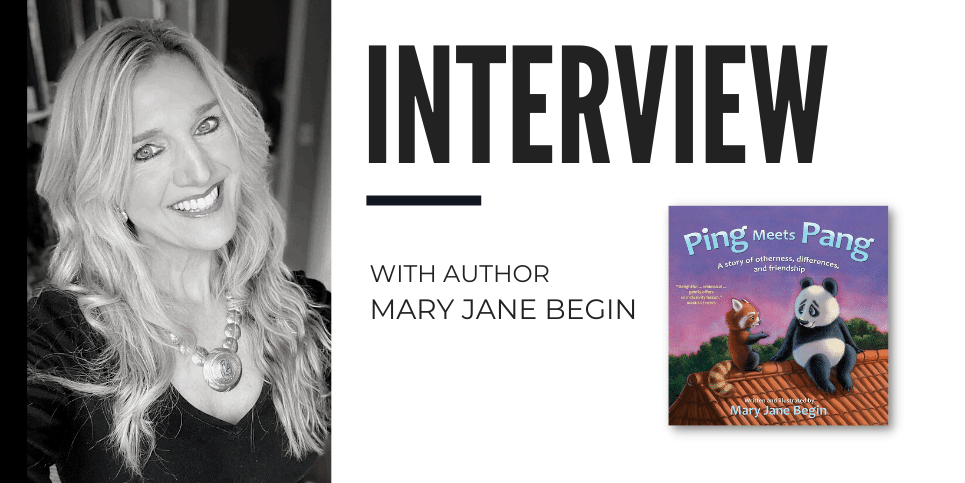The Children’s Book Review Interview in partnership with Mary Jane Begin, author of Ping Meets Pang
Mary Jane Begin is an award-winning illustrator and author of numerous children’s books, and professor in the Illustration Department at Rhode Island School of Design. She’s also the Chair of Illustration in the M.F.A for Children’s Literature at Hollins University. Mary Jane recently won the prestigious Big Xin Children’s Literature Award in China for her book, Willow Buds; the Tale of Toad and Badger. She has received awards from the Society of Illustrators, Awards of Excellence from Communications Arts, and the Critici Erba Prize at the Bologna Book Fair as well as the Erma Simonton Black Award from the Bank Street College.
Here we discuss her latest picture book, Ping Meets Pang, a great story for opening conversations about inclusivity.
Dr. Jen Harrison: Race, difference, and inclusion are complex topics for any age group. What prompted you to target such a young audience for this message?
Mary Jane Begin: When I started developing this story several years ago, I was most certainly influenced by the explosion of intolerance between people of different racial, gender, economic, political, religious, and regional groups within our country and abroad. It’s a systemic problem fueled by fear of “others” and a recipe for division and intolerance.
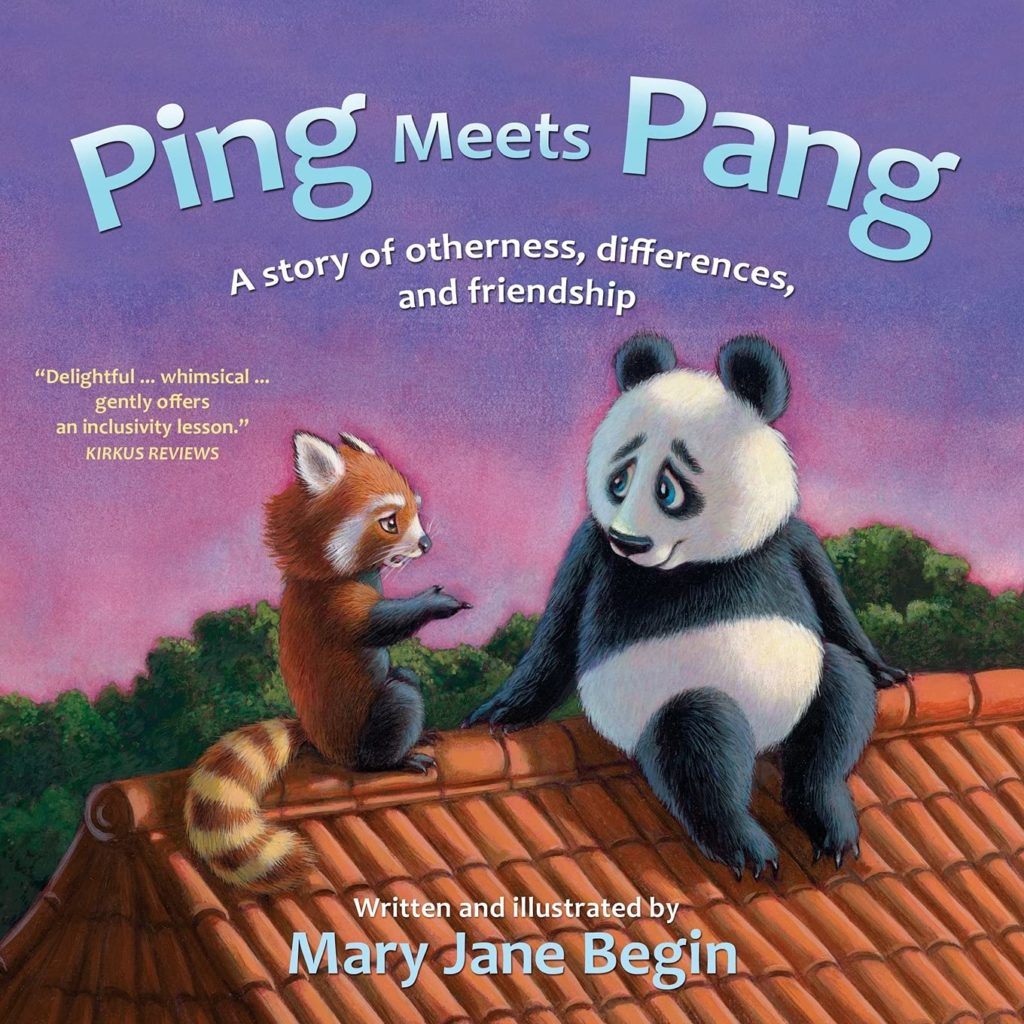
As a children’s book author and illustrator, I feel strongly that we as visual communicators can influence and encourage new ideas in young growing minds, and encourage nuanced thinking that overcomes fear and invites curiosity and connection. When I visit classrooms at elementary schools, I see the openness and acceptance of young children amongst each other and want to encourage, rather than suppress it.
The illustrations play an important role in demonstrating otherness and sameness in this story. Tell us a bit more about how you developed them?
I visited China a few years back and went to a panda sanctuary in Chengdu. I was delighted to see the sleepy bamboo-munching giant pandas but was surprised to also see just over a large wall, red pandas racing up and down trees, nibbling away on bamboo too. When I saw the red pandas I thought “THAT is a panda? It looks like a raccoon!” Then I imagined a red panda overhearing me and getting annoyed by my comment. That led to the idea of the two pandas meeting unexpectedly, each incredulous that the other claimed to be a panda.
I immediately started sketching out the two pandas, working on the overall shape and size differences to reflect their personalities. My stories tend to start with character interaction through sketching before a word is ever written. Once I knew who they were and had named them (ping pang means ping pong in Mandarin), I started on the written story, which flows back and forth like a game of ping pong. The layout was designed with this back and forth in mind, providing a design of contrast with Ping on one side and Pang on the other.
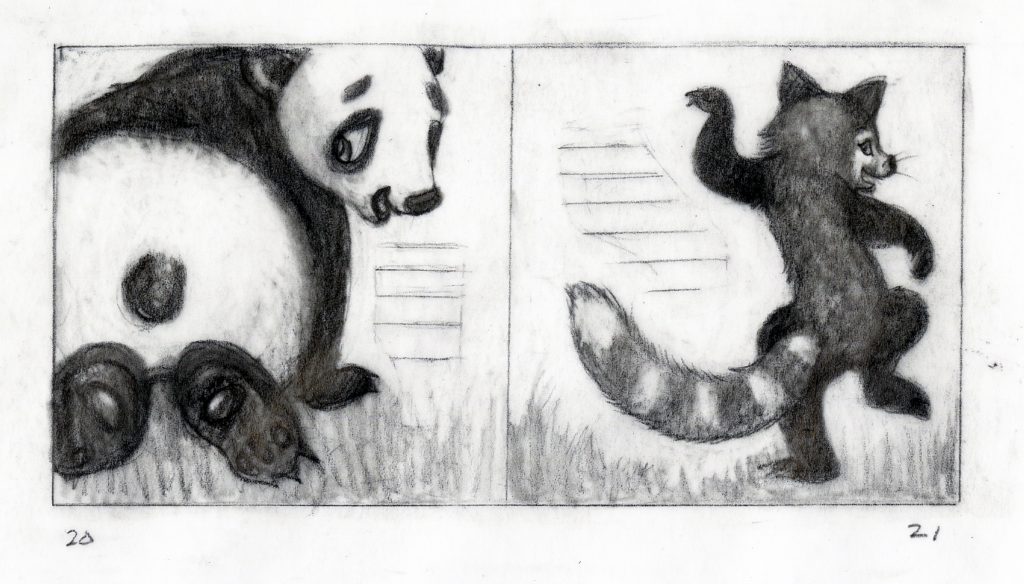
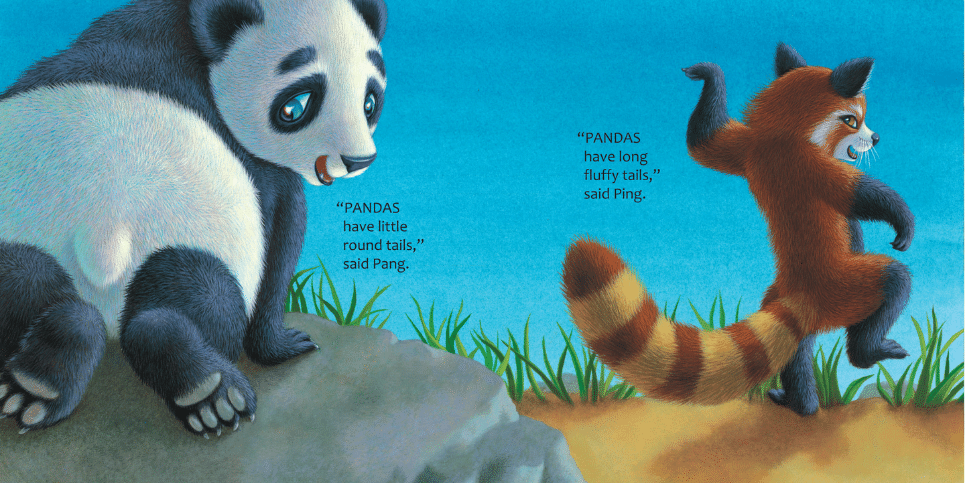
Is there more you think readers can learn from the animal kingdom about diversity and inclusion?
I’ve always been fascinated by animals who “adopt” animals from another species. The act of protecting, nurturing, and helping a creature outside of the species breaks with our assumptions that animals instinctively stick with their own “tribe”. There has been much study and research on what motivates this behavior, with the overriding theory that it benefits both species.
“Social companionship in some cases may actually be enough of a benefit so long as it is not outweighed by competition [or] threat.” (National Geographic, May, 2013-by Christine Dell’Amore, quote by Jill Goldman, animal behaviorist.)
If human beings look to this behavior as a message from the animal kingdom, it supports the idea that we are interdependent and need to cross divides to help each other as it is mutually beneficial.
How would you recommend an educator use this book to foster genuine change in the classroom?
It would be an interesting exercise to have students work through the q and a section, as there are prompt questions meant to stimulate conversation about how the characters feel when they aren’t recognized by the other. An educator could point to the visuals and ask: “What emotion does Ping/Pang feel in this illustration?” I focus on emotional expression in my characters, using my own face merged with the animal character to capture the expression. This can be very helpful to teach children who struggle with reading expressions.
Another exercise in fostering connection might be a simple questionnaire that asks: What’s your favorite book? Movie? Fruit/Vegetable? Number? Shape? Color? The teacher could then read the responses and encourage the kids to discover that someone they might not know well, has the same response/favorites as they do. This is an exercise I give my students at RISD, as it encourages students to see connections in the classroom, overcome the strangeness of a large group of people and forge tighter bonds with new people-especially on the first day of class.
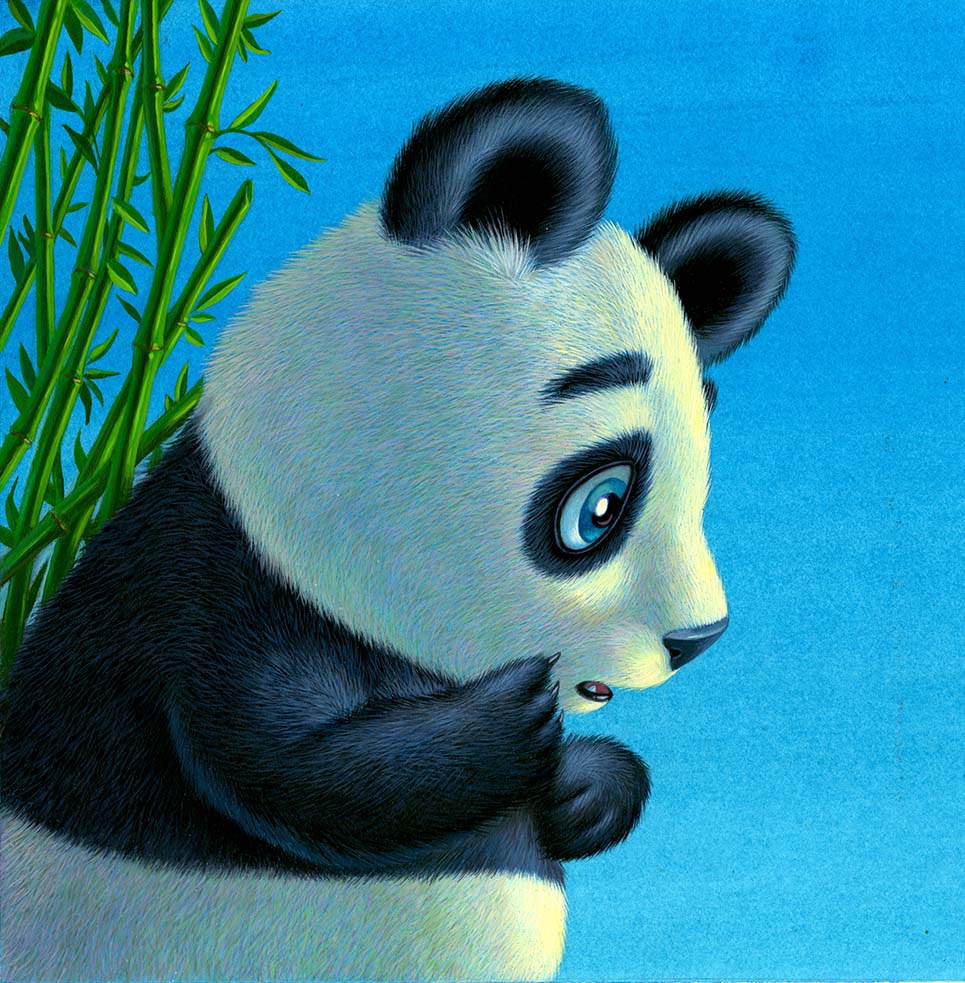
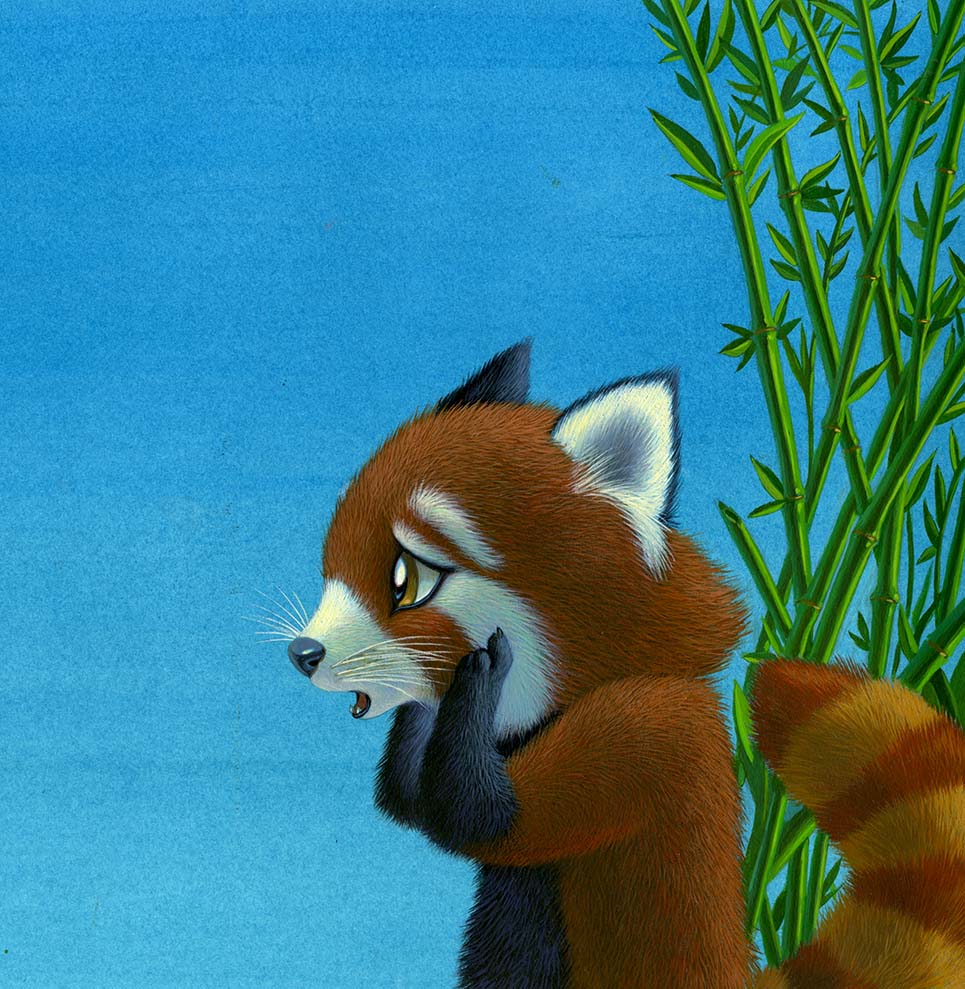
The idea of exploring diversity within a captivity (zoo) setting is intriguing. Why did you choose a domesticated setting rather than a wild one for the story, and do you think that has an impact on the message?
I chose to have the story take place in captivity rather than in the wild, partly because it’s based on my actual experience, and also because the wall that separates the pandas is both a reality in the sanctuary and a symbol of the barriers that separate people.
The first double-page spread shows the wall as the divider between these two groups of pandas. Thereafter, the gutter itself serves as the barrier between them until the pandas actually “see” each other’s panda-ness and land on the same page at the end of the book. The setting also puts the pandas in the context of “civilization” with walls and borders very much like that of human beings, with homes and constructed spaces that separate us.
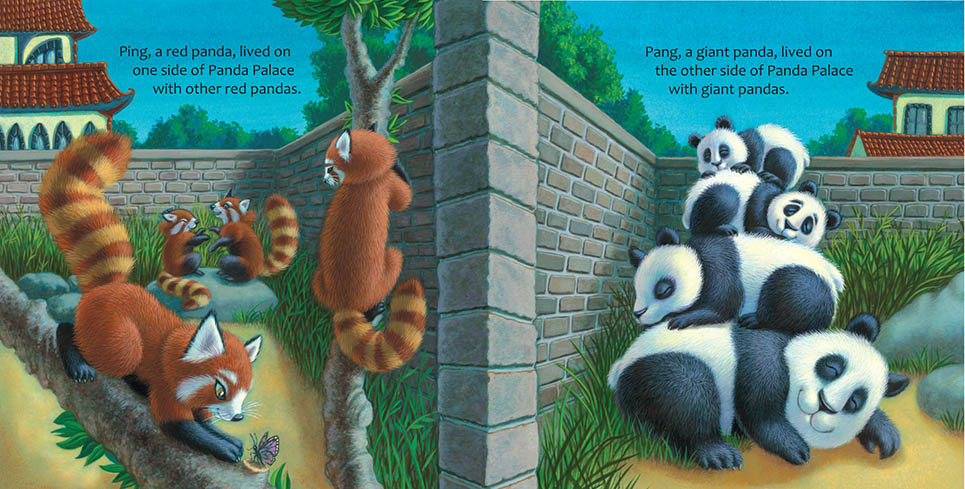
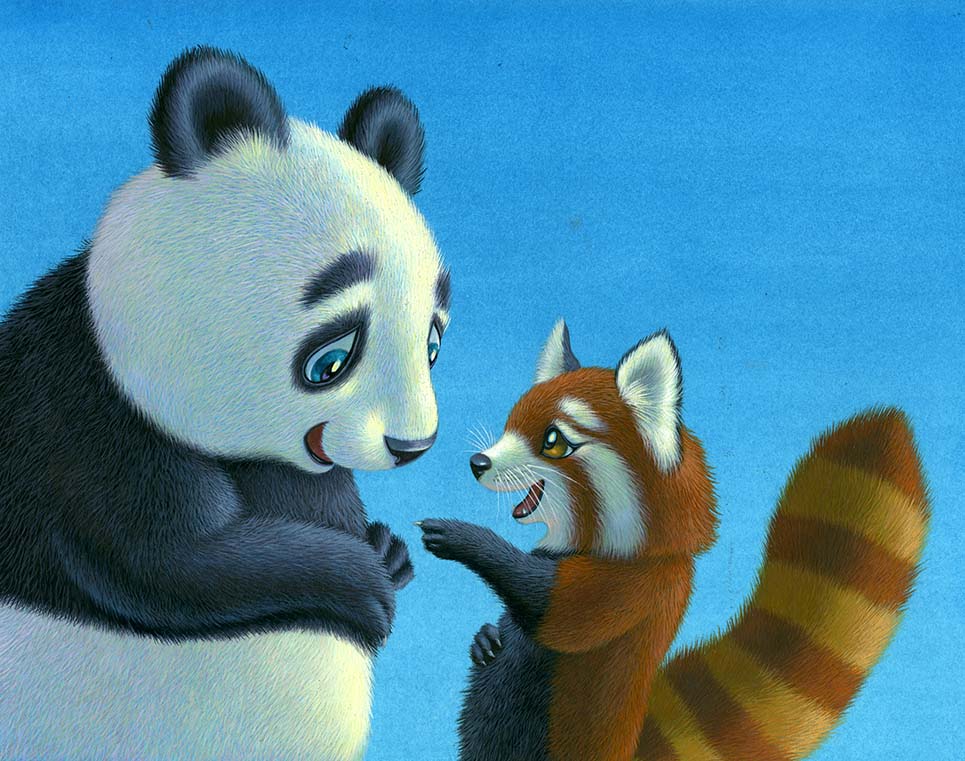
If you were writing this book for an older audience, what would you do differently?
I developed a literacy project recently involving the creation of stories with a group of third graders. The class was given Ping Meets Pang as a starting point for creating contrasting characters in both words and illustrations. The students, though older than the demographic the book is intended for, maintained that Ping Meets Pang is for all ages as the theme is universal and accessible for anyone.
Though I agree with them, if I were to explore the theme with more nuance and texture for a chapter book, it might involve a larger cast of characters in a zoo or similar setting to capture the conflict and challenges between groups as well individuals. By answering this question, my brain is now formulating ideas for such a story! Questions are without a doubt, the best food for the imagination :))
What would you say to those who insist that differences are more important than similarities between people (or pandas)?
As I mentioned in Question #4, creating connection, trust and support encourage a fertile learning environment for any age group. We are inclined to see differences as our default mode but can be taught to seek out what connects us as well. I think that creating these connections helps people to recognize and respect differences, and even leads to celebrating that which makes us each wonderfully unique. Just as an up needs a down, or an in needs an out, a same needs a different to have meaning.
Will you be writing more children’s stories in the future, and if so, will they also feature pandas?
I’ve imagined a sequel for Ping Meets Pang, where the two characters are curious about what’s outside of Panda Palace and have to depend on each other’s differences/strengths to navigate the city they find themselves in. It may involve one of them trying to drive, and certainly a scene of them trying a tasty treat beyond bamboo!
I’m also currently working on two very different picture books: The first is tentatively entitled Revolution, about the industrial revolution through the eyes of a French Canadian child. She immigrated to the U.S at the turn of the century with her family who left the farm behind to work in the textile mills. The story is based on my grandmother, also named Mary Jane, who left elementary school to work at the mill as a way to help her family survive.
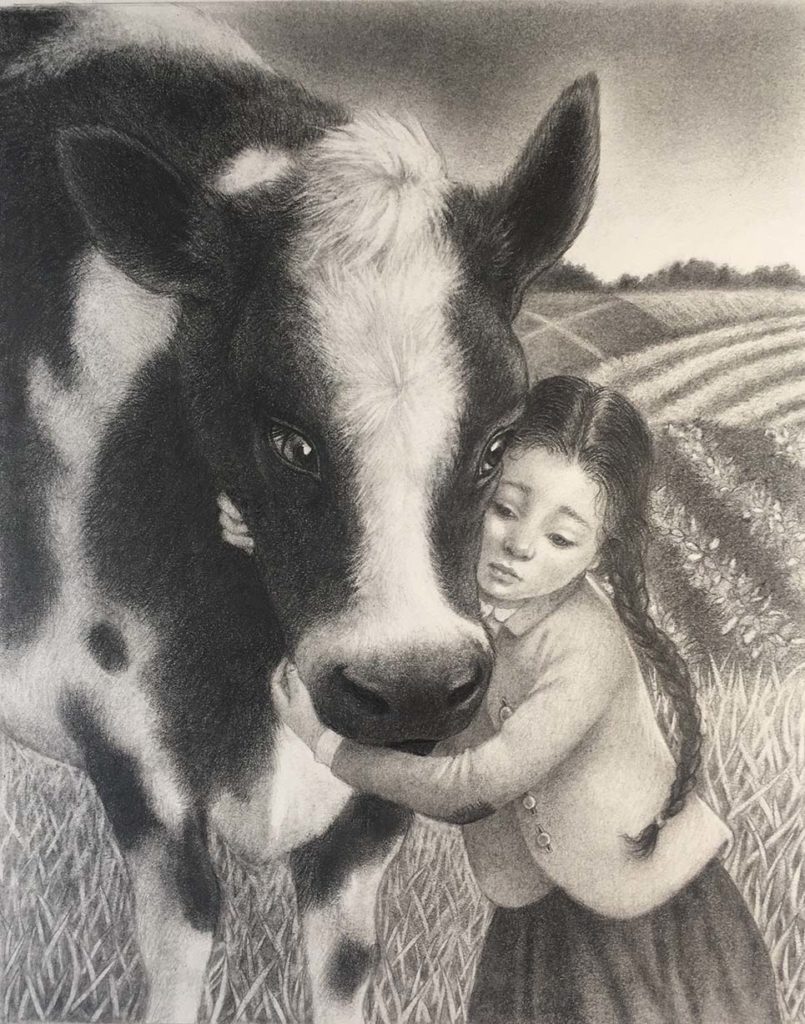
The second picture book is about the love and loss we experience with our pets, featuring two Boston terriers, Oscar and Meyer, and their beloved object-the title of the story-Mama’s Purse. I’ve created a few sample illustrations for Revolution, and I’m currently working on the storyboard layout for Mama’s Purse.
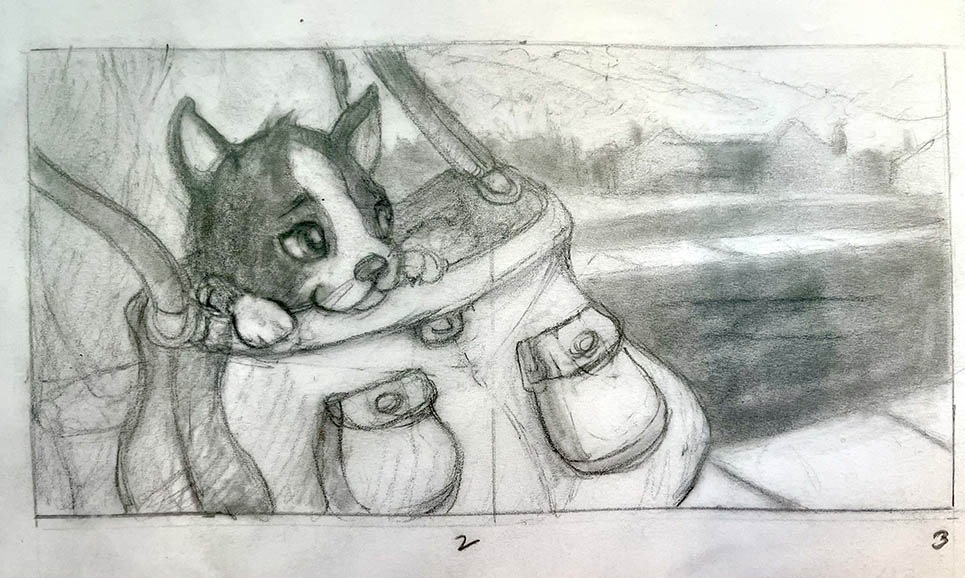
You are a critical scholar of children’s literature as well as a writer — how does this impact your writing process?
As a professor, writer, illustrator, and Chair of Illustration for the MFA in Children’s Literature program at Hollins University, I’ve had the unique opportunity to wear a number of hats. Having to deconstruct meaning, decode symbols and provide comparative studies of children’s book literature for students, I’m distinctly more aware of my work in the context of a larger world of stories and images.
Reading, digesting, and allowing the words and images of luminaries who have come before me to influence both my writing and my illustrations make the process richer as a creative act. None of us are working in a vacuum or bubble…we truly do depend on each other for creative inspiration. Critical assessment and reflection help me to recognize that moment when a bit of research, a nugget of curiosity, or a well-placed question (#6!) is suddenly the springboard for my next story.
What would your advice be to parents and educators who want to encourage their children to embrace diversity (apart from reading Ping Meets Pang, of course!)?
As a child, my mom would often say we should “walk a mile in someone else’s shoes” before we cast judgment. I think that embracing diversity starts with teaching empathy. Encouraging a child to empathize with rather than judge another person’s situation, condition or differences is the first step to embracing diversity. As educators, we can lead through exercises in empathy as well as share books that encourage this message.
Dr. Seuss’s Horton Hears a Who had a profound effect on me as a child, demonstrating the core belief that we are meant to help protect each other, not always in spite of our differences, but because of them. As a parent of two grown children, I encouraged both of my kids to embrace kindness as the highest of ideals and tried to demonstrate each day, small acts of kindness that they could see and understand.
On the other side of empathy, compassion and understanding is the delightful surprise of learning something new from someone’s experiences that are different from our own. As surprise was the first word that I learned to read, it has also become a guiding principle. Stepping outside of myself to learn something new about someone else is truly the best surprise of all.
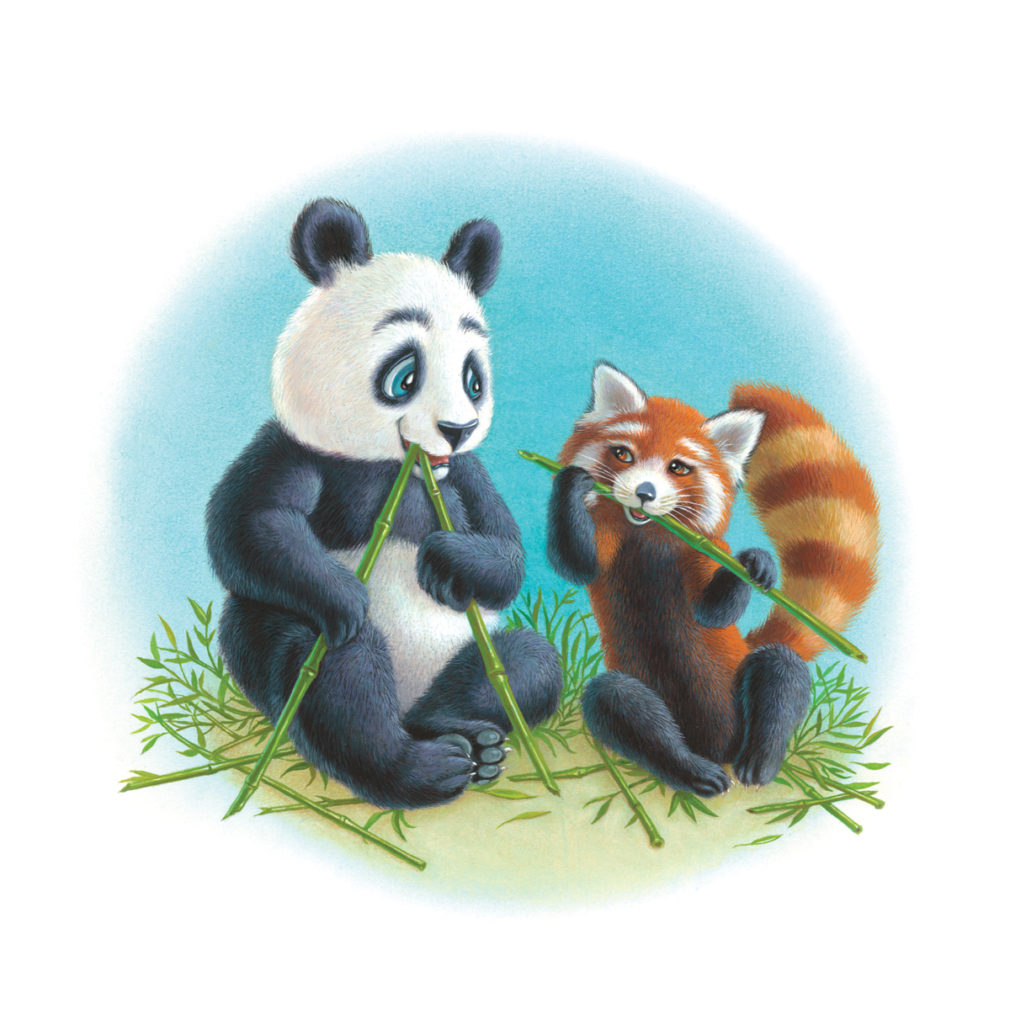
About the Book

Ping Meets Pang
Written and Illustrated by Mary Jane Begin
Ages 3-8 | 36 Pages
Publisher: Wyatt-MacKenzie | ISBN-13: 9781948018876
Publisher’s Synopsis: Ping and Pang are both Pandas, but they don’t look a thing like one another and that’s a problem. Each maintains they possess the true qualities of being a Panda; the correct color, the size, and shape of their ears, the even fluffiness of their tails. It is only when they realize what they have in common do they slowly appreciate each other’s differences.
The analogy to today’s political and racial climate points to the acceptance of the other side’s differences and finding common ground.
PING MEETS PANG is an educational tool. It is an allegory about inclusiveness and acceptance of “the other” told through two pandas. The story is meant to spark discussions about multiculturalism and body positivity, and inspire the protection and conservation of pandas. Includes conversation starters for further instruction and participation!
“Using an engaging combination of repetition and mirrored imagery, Ping Meets Pang beautifully illustrates the superficiality of differences between individuals and the arbitrary nature of categorization.” — The Children’s Book Review
Buy the Book
This interview—Mary Jane Begin Discusses Ping Meets Pang—was conducted between Mary Jane Begin and Dr. Jen Harrison. For similar books and articles, follow along with our content tagged with Diversity, Friendship, Inclusion, Mary Jane Begin, Panda Bears, and Picture Book.

